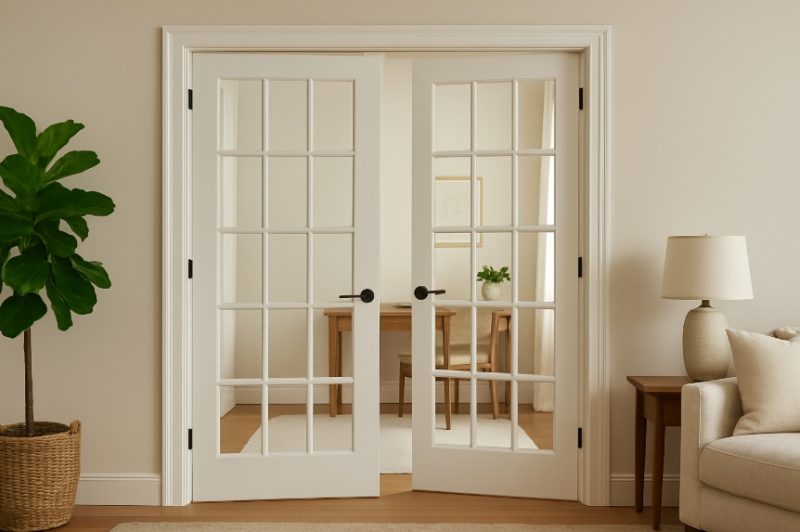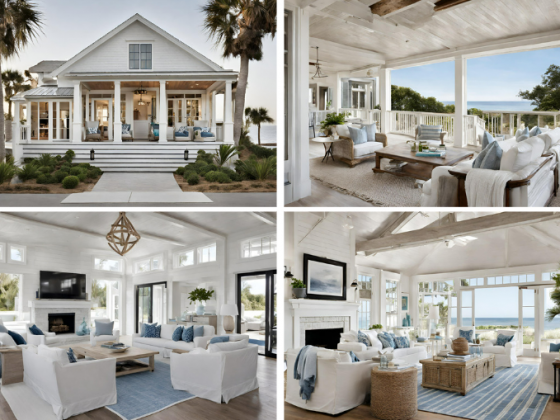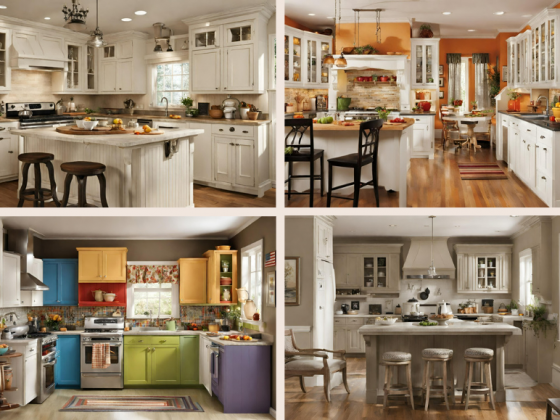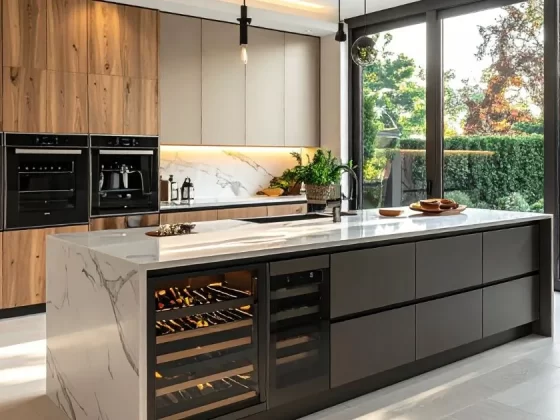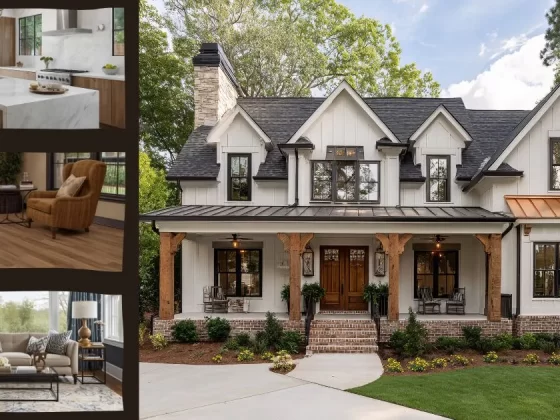Ever wished your home could feel brighter, more open, or effortlessly stylish — without knocking down walls or undertaking a full renovation? Interior French doors might just be the secret design ingredient you’ve been missing.
These graceful, light-loving doors have been a fixture of refined interiors for centuries — yet in 2025, they’re making a bold comeback, blending timeless elegance with modern practicality. From cozy cottages to sleek city lofts, interior French doors are transforming how people experience space, light, and connection inside their homes.
In this guide, we’ll explore the enduring charm, evolving styles, and innovations that make French doors one of the most desirable interior design elements today. Whether you’re renovating, redecorating, or simply dreaming of a brighter space, this article will help you understand not just why French doors work — but how to make them work beautifully in your home.
A Glimpse Into History: How French Doors Became a Global Design Icon
Like many things French — think croissants, couture, and classic art — the French door began with beauty and practicality in perfect harmony.
Originally emerging during the Renaissance period in 17th-century France, what we now call “French doors” were actually tall, glass-paned windows that opened outward, allowing more light and air into the grand homes of the era. They were first installed on balconies and terraces to bridge indoor and outdoor living — a radical idea at the time.
As the design spread across Europe and later into the United States, these luminous doors evolved from exterior features to interior statement pieces. The principle remained the same: a graceful frame filled with glass, turning every doorway into a portal of light.
By the Victorian period, the French door had become a hallmark of refined architecture, and today, designers continue to reinterpret it — from traditional wood-paneled versions to sleek, steel-framed minimalist models.
Why Homeowners Still Love French Doors (and Always Will)
Fast-forward to 2025, and interior French doors are more than a nostalgic nod to old-world elegance — they’re a design solution that fits our modern lifestyles. Here’s why they’ve never truly gone out of style.
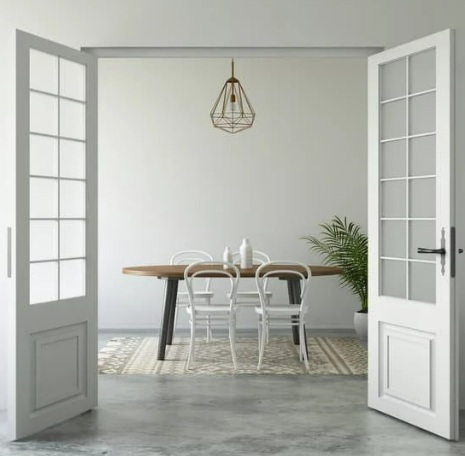
1. Natural Light, Naturally Uplifting
In an age when wellness and natural light are central to home design, French doors deliver beautifully. Their generous panes draw daylight into interior spaces that might otherwise feel dim or enclosed.
Studies show that exposure to natural light can boost productivity, regulate sleep, and even improve mood — making these doors a functional choice as much as an aesthetic one.
2. Connection Without Clutter
Unlike solid doors, French doors let rooms “talk” to each other. You can separate a home office from the living room or a dining area from the kitchen without severing visual flow. It’s perfect for today’s open-concept layouts that seek both connection and flexibility.
3. Privacy, on Your Terms
Want peace and quiet for a Zoom meeting or family dinner? Close them. Want to feel part of the household energy again? Open them wide. With options like frosted or etched glass, blinds, and sheer curtains, privacy becomes an adjustable feature — not a fixed compromise.
4. Timeless Appeal + Modern Versatility
French doors bring a touch of European charm to any interior — but they’re also chameleons. They blend effortlessly into modern industrial lofts, Scandinavian minimalism, or coastal chic homes. In 2025, we’re seeing ultra-thin black frames, pivot hinges, and even smart glass technology that lets you switch from clear to opaque with a tap.
5. Added Home Value
According to real estate professionals, upgrading from solid doors to glazed French doors can subtly raise a home’s market appeal. They signal sophistication, maximize light, and often make spaces appear larger — all high-value traits in today’s property market.
At a Glance: Why People Love French Doors in 2025
-
Brightens dim interior spaces with natural light
-
Connects rooms visually while preserving privacy
-
Available in diverse materials and finishes for any décor
-
Adds architectural value and timeless beauty
-
Offers energy-efficient and smart-tech options
French Door Styles: Which One Fits Your Home?
Choosing the right French door style is like picking the perfect pair of shoes — form matters, but so does function. Here’s a guide to the main options you’ll encounter in 2025:
| Style | Description | Best For |
|---|---|---|
| Classic Double Swing Doors | The traditional two-door design opens inward or outward. | Living room to dining room, or home office entry. |
| Sliding French Doors | Elegant panels that glide along tracks; great when space is tight. | Apartments, small rooms, or minimalist interiors. |
| Pocket French Doors | Doors that slide into the wall cavity when opened. | Studio apartments or hallways where space-saving is key. |
| Bi-Fold French Doors | Panels fold accordion-style, opening up large spaces completely. | Open-plan living areas or sunrooms. |
| Single French Door + Fixed Panel | One operational door beside a fixed glazed panel. | Narrow passages or asymmetric layouts. |
Pro Tip: If you’re going for a modern look, opt for slim, metal-framed glass doors with minimal mullions. If your space leans traditional, wood or painted MDF with classic divided lites fits perfectly.
The Glass Matters: Finding Your Perfect Pane
The magic of French doors lies in their glass. Today, you have more choices than ever — each balancing privacy, light, and aesthetics differently.
-
Clear Glass
Ideal for maximum light and visual openness. Perfect for living areas, hallways, or connecting spaces. -
Frosted or Etched Glass
Offers privacy without blocking brightness — great for home offices or bedrooms. -
Textured or Reeded Glass
Adds depth and subtle pattern. Works beautifully in vintage or mid-century homes. -
Tinted Glass
Filters sunlight and reduces glare — excellent for bright, sunny rooms. -
Stained or Colored Glass
Adds a touch of artistry and color. Often used as a focal point in classic or eclectic interiors. -
Smart Glass (Switchable)
The future of privacy: turns from clear to opaque with a touch or voice command.
Ideal for tech-savvy homes and multifunctional rooms.
Materials, Finishes, and Hardware: Crafting the Perfect Look
The frame and finish of your French doors determine how well they complement your space — and how long they’ll last.
1. Materials
-
Solid Wood: Traditional, warm, and timeless — but requires periodic care.
-
Engineered Wood (MDF): Smooth, affordable, and stable — great for painted finishes.
-
Aluminum or Steel: Modern, minimal, and durable — perfect for industrial or urban homes.
-
Fiberglass or Composite: Low-maintenance and energy-efficient — increasingly popular for busy households.
2. Finishes and Colors
2025’s interior trends embrace contrast and craftsmanship.
-
Matte black or graphite grey for architectural drama
-
Soft whites and warm oak tones for coastal and Scandi themes
-
Dual-tone doors — black exterior, white interior — for layered sophistication
3. Hardware Highlights
-
Brass, bronze, or matte black handles are timeless.
-
Minimalist levers or concealed hinges keep a clean silhouette.
-
Add multipoint locks or soft-close systems for security and comfort.
Design tip: The right hardware is like jewelry — small details that make a big statement.
How to Choose the Right French Doors: A Step-by-Step Guide
-
Define the Function
Are you dividing rooms or adding privacy? The purpose determines the glass type and swing direction. -
Measure the Space
Always check ceiling height, wall clearance, and adjacent furniture placement. -
Decide the Door Type
-
Hinged for a traditional statement
-
Sliding for tight spaces
-
Pocket for minimal visual interruption
-
-
Pick Your Frame Material
Match it to your interior theme and maintenance comfort level. -
Choose Your Glass
Go clear for openness, frosted for privacy, or decorative for flair. -
Select Hardware
Consistency is key — align handles, hinges, and trims with your home’s overall finish palette. -
Plan the Finishing Touches
Curtains, blinds, or etched films can adjust light and privacy as needed.
Real-Life Design Inspiration
To bring these ideas home, here are three on-trend ways people are using interior French doors right now.
1. The Modern Home Office
A homeowner in London replaced a solid wood door with frosted-glass French doors to brighten her home office. She kept sound insulation while visually connecting with the living room — a subtle but powerful upgrade for her remote-work lifestyle.
2. The Compact Apartment Solution
In a New York studio, a sliding French door separates the sleeping area from the main living space. The result: airy during the day, private at night — without losing precious square footage.
3. The Transitional Family Space
A family in Los Angeles used bi-fold French doors between the kitchen and patio room. During gatherings, the doors fold back for one continuous entertaining space; during quieter days, they close to create a cozy breakfast nook.
Design Trends to Watch: The French Door Evolution
As homes become more connected, sustainable, and tech-driven, interior door design is evolving fast. Here’s what’s trending this year:
-
Slimline Frames: Less frame, more glass — achieving a floating, elegant effect.
-
Smart Privacy Glass: Toggle between transparent and opaque instantly.
-
Sustainably Sourced Materials: FSC-certified wood and recycled metal frames are becoming the norm.
-
Industrial Revival: Black steel-framed French doors remain a designer favorite for their loft-style aesthetic.
-
Colorful Frames: Soft greens, deep blues, and taupe neutrals are challenging the dominance of plain white.
-
Integrated Blinds: Built-in blinds between panes — zero dust, zero clutter.
-
Hybrid Styles: Mixing classic pane divisions with modern minimalist frames for a “best of both worlds” look.
Maintenance & Care Tips
Beautiful as they are, French doors do need gentle upkeep to maintain their clarity and elegance.
-
Clean Glass Regularly: Use a soft cloth and streak-free cleaner. Avoid ammonia on tinted or treated glass.
-
Check Seals and Hinges: Lubricate moving parts annually; replace worn weather-stripping.
-
Repaint or Refinish Wood: Every few years, depending on exposure.
-
Inspect Locks: Especially for multi-point systems — test for smooth operation.
-
Avoid Slamming: Even though glass is tempered, repeated impact weakens joints and seals.
Expert Insight: What Designers Say
“French doors are about connection — emotional and spatial. They let light and people flow naturally, and that’s why they’ll never go out of style.”
— Charlotte Vance, Interior Designer, London
“We’re seeing clients request steel or aluminum French doors inside homes now, not just patios. They’re redefining the concept of ‘open space’ in interior architecture.”
— Evan Liu, Architect, New York
Styling Ideas for Every Home
Classic Charm
Painted white wood frames with brass handles, paired with sheer curtains — perfect for cottage or traditional interiors.
Modern Minimalism
Black steel frames, clear glass, no mullions. Pair with neutral walls and light oak flooring.
Boho Chic
Stained glass panels or etched floral patterns, with warm wood finishes and vintage décor.
Scandinavian Serenity
Matte white frames with frosted glass, emphasizing light diffusion and calm simplicity.
The Lifestyle Factor: It’s More Than Just a Door
In an era when homes double as workplaces, gyms, and sanctuaries, French doors play an unexpected psychological role. They open up sightlines, invite daylight, and support mental well-being — turning walls into filters rather than barriers.
They also embody the design ethos: flexible, sustainable, and emotionally enriching spaces. Whether you live in a chic apartment or a sprawling family home, French doors remind us that architecture can be both functional and poetic.
The Door That Transforms Everything
Imagine waking up to sunlight filtering through graceful glass panes… or hosting a dinner party where your spaces feel open yet intimate. That’s the quiet magic of interior French doors — they don’t just divide rooms; they define ambiance.
In 2025, where design meets mindfulness, these doors are more than architectural elements — they’re daily luxuries that connect us with light, beauty, and each other. Choose thoughtfully, maintain lovingly, and you’ll have not just a doorway, but a view worth framing.

